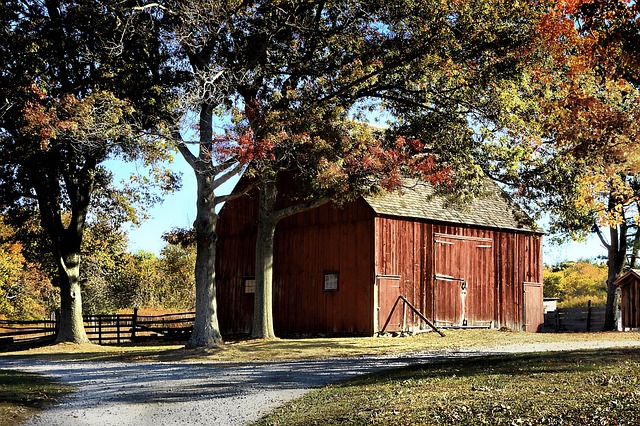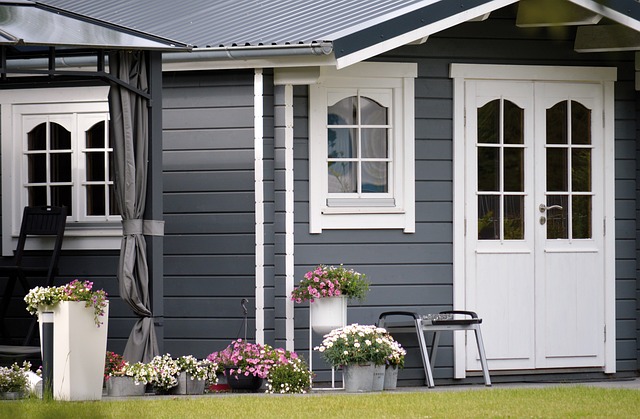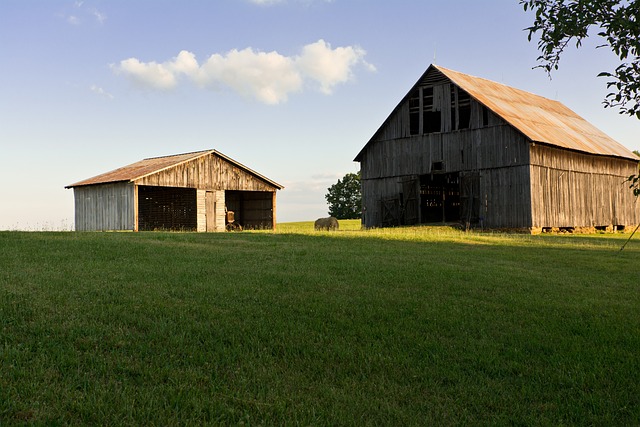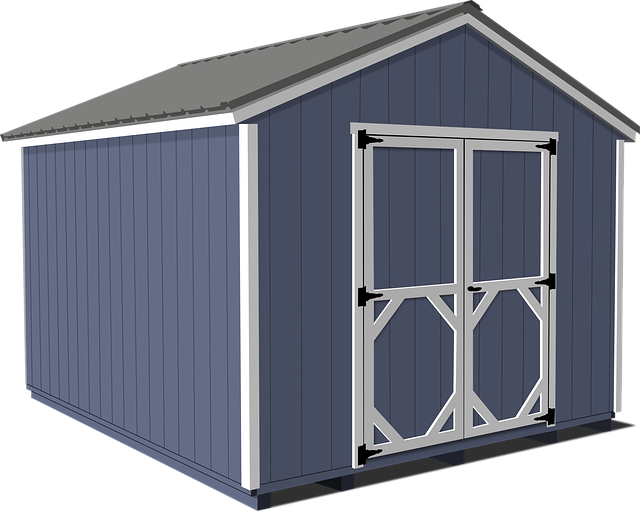Farm sheds in Riverina, NSW play a crucial role in the region's agricultural operations, providing secure and robust storage solutions that protect crops, machinery, and equipment from the area's variable weather. These structures are designed to enhance workflow efficiency, facilitate large-scale farming practices, and fulfill market demands by supporting year-round activities. They also contribute to the economic viability of farms through diversified income streams generated by value-added products. In Riverina, farm sheds are engineered to withstand extreme climates, incorporating features like effective ventilation for hot summers and insulation for cold winters. Materials such as Colorbond steel are used for their durability and resistance to environmental factors, which extends their lifespan and reduces maintenance costs. Strategic placement on the property optimizes natural light and breeze paths, reducing the need for artificial lighting and heating. Additionally, sustainable design principles are being adopted, with materials chosen for lower environmental impact and higher energy efficiency. Renewable energy solutions like solar panels or wind turbines are integrated to further promote sustainability. Compliance with local and state regulations is essential in the construction of farm sheds, with careful planning and adherence to environmental standards, zoning laws, and safety protocols ensuring that these structures support both the practical needs of modern farming and the regulatory framework governing agriculture in the Riverina region.
In the expansive Riverina region of New South Wales, large farm sheds stand as testaments to the area’s robust agricultural industry. These structures are more than mere shelters; they are integral components of modern farming operations. This article delves into the multifaceted role of farm sheds, emphasizing their significance in protecting equipment, maximizing storage capacity, and facilitating efficient farm management. We explore design considerations tailored to the Riverina’s unique environmental conditions, material selection for long-term resilience, innovative solutions to enhance functionality, and the regulatory framework governing farm shed construction in NSW. Understanding these aspects ensures that farmers can optimize their infrastructure to meet the demands of contemporary farming practices.
- Understanding the Importance of Large Farm Sheds in Riverina NSW
- Design Considerations for Efficient and Durable Farm Sheds in the Riverina Region
- Material Selection: Ensuring Long-Term Resilience for Your Riverina Farm Shed
- Maximizing Storage and Functionality: Innovative Solutions for Large Farm Sheds
- Compliance and Permits: Navigating Regulations for Farm Shed Construction in NSW
Understanding the Importance of Large Farm Sheds in Riverina NSW

In the expansive agricultural landscape of Riverina NSW, large farm sheds serve as indispensable assets for farmers and producers. These structures are more than mere storage facilities; they are multifunctional hubs that support the diverse operations central to the region’s thriving agribusiness sector. Farm sheds provide ample space to store machinery, equipment, and crops securely, safeguarding against the elements and ensuring longevity of the stored items. The Riverina’s climate, characterized by its variable weather patterns, necessitates robust shelters for both livestock and harvested produce. Large farm sheds, with their substantial dimensions and designed durability, cater to this need efficiently.
The strategic placement and design of these sheds are crucial for optimizing workflow and productivity on farms. They allow for efficient organization of agricultural machinery, enabling rapid deployment during planting, harvesting, and maintenance seasons. Moreover, the use of farm sheds in Riverina NSW contributes to the region’s capacity to handle larger scale operations, which is essential for meeting the demands of both local and international markets. These sheds are not only vital for operational efficiency but also play a significant role in the economic sustainability of farms in the area, facilitating year-round activities and diversifying income streams through value-added agricultural products.
Design Considerations for Efficient and Durable Farm Sheds in the Riverina Region
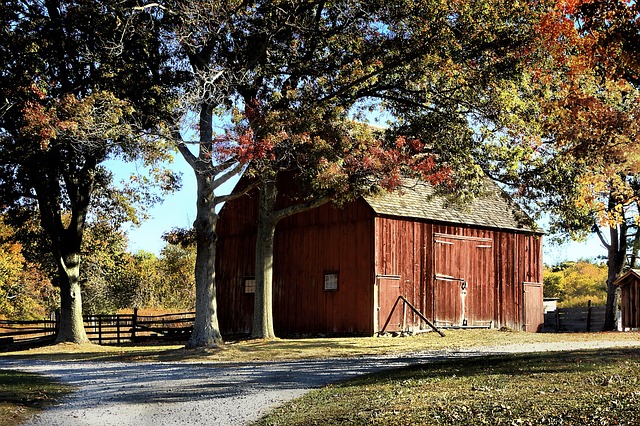
In the Riverina region of New South Wales, where agriculture is a cornerstone of the economy, farm sheds serve as vital structures for protecting equipment, storing feed, and sheltering livestock. Designing these sheds with efficiency and durability in mind is paramount. The harsh climatic conditions, ranging from scorching summers to cold winters, necessitate a design that optimizes ventilation in the summer and insulation during the winter months. Materials such as Colorbond steel are commonly utilized due to their resilience against corrosion, wind, and hail, ensuring longevity and minimizing maintenance costs. The orientation of the shed on the property should capitalize on natural light and breeze paths, reducing reliance on artificial lighting and heating. Additionally, incorporating a robust guttering system is essential to manage rainwater effectively, which can be invaluable for irrigation during dry spells. Farmers must also consider the size and layout of the shed to accommodate various farm activities, from machinery storage to animal housing, ensuring that the design aligns with the specific needs of their operation.
Sustainable practices should be integrated into the design of farm sheds in the Riverina. This includes selecting materials that are environmentally friendly and have a lower carbon footprint. Energy efficiency can be achieved through strategic placement of windows and doors, as well as the use of energy-efficient lighting and machinery within the shed. Furthermore, designing for flexibility allows farmers to adapt their sheds as their agricultural practices evolve or as new technologies emerge. The inclusion of features such as solar panels on the roof or wind turbines can further enhance the sustainability profile of these structures. A well-designed farm shed in the Riverina not only protects against the elements but also contributes to a more sustainable and profitable farming operation, embodying the resilience and innovation characteristic of the region’s agricultural community.
Material Selection: Ensuring Long-Term Resilience for Your Riverina Farm Shed

When constructing large farm sheds in the Riverina region of New South Wales, material selection plays a pivotal role in ensuring the structure’s longevity and resilience against the harsh elements it will face. The Riverina’s variable climate, ranging from scorching summers to unpredictable winter storms, necessitates materials that are both durable and adaptable. High-tensile steel is often the preferred choice for frame construction due to its strength and resistance to corrosion, which is critical in preventing rust and maintaining structural integrity over time. Additionally, cladding materials such as Colorbond or Zincalume are recommended for their ability to withstand the relentless UV radiation that can fade and degrade less robust materials. These steel options also offer a wide array of finishes and colors, allowing for both practical and aesthetic choices that complement the Riverina’s diverse agricultural landscapes.
Furthermore, considering the region’s propensity for strong wind events and heavy rainfall, the design of farm sheds should incorporate features that promote ventilation and drainage. Adequate roof pitches and eaves can protect against wind damage while preventing water ingress. The use of durable, UV-resistant sealants and high-quality hardware is also essential to maintain the integrity of joints and fastenings over the long term. By thoughtfully selecting materials that are proven to withstand the environmental conditions specific to the Riverina, farmers can invest in farm sheds that not only serve their immediate needs but also endure for decades, supporting the sustainability and success of agricultural operations in this fertile region.
Maximizing Storage and Functionality: Innovative Solutions for Large Farm Sheds

In the expansive agricultural heartland of Riverina, NSW, large farm sheds serve as the backbone of storage and functionality for farmers. To maximize their utility, innovative solutions are being integrated into the design and construction of these sheds. These structures are not just repositories for equipment and produce; they are multifunctional spaces that adapt to various farming needs. Material selection is paramount, with durable and weather-resistant options ensuring longevity and protection against Riverina’s diverse climate. The integration of advanced organizational systems within the shed allows for efficient categorization of items, reducing search time and enhancing workflow. Farmers are also opting for modular design elements that can be easily reconfigured or expanded to accommodate changing storage requirements or new farm equipment. Natural lighting solutions, such as skylights and translucent roof panels, not only brighten the interior but also contribute to energy efficiency, reducing reliance on artificial lighting during daylight hours. Additionally, the incorporation of energy-efficient insulation and climate control systems ensures that sensitive agricultural products are kept in optimal conditions year-round. These innovative approaches to farm shed design in Riverina not only optimize storage capacity but also streamline farming operations, contributing to the overall success and sustainability of the region’s agricultural sector.
Compliance and Permits: Navigating Regulations for Farm Shed Construction in NSW

When constructing large farm sheds in the Riverina region of New South Wales, compliance with local and state regulations is paramount. The New South Wales (NSW) Government has established a set of guidelines and requirements to ensure that all farming infrastructure, including farm sheds, adheres to environmental standards, zoning laws, and safety protocols. Building permits are mandatory for any new construction; these can be obtained from the local council or an authorized certifier. The process involves detailed planning and submission of plans that outline the proposed shed’s dimensions, materials, location, and intended use. It is essential to engage with experts who understand both the agricultural needs and the regulatory framework, as this will streamline the approval process. Additionally, farmers must consider the impact of their construction on local water tables, biodiversity, and any protected land or species within the vicinity. By adhering to these compliance measures, Riverina farmers can ensure that their farm sheds are not only built to last but also contribute positively to the sustainability and integrity of the region’s agricultural landscape. Navigating these regulations requires a proactive approach, attention to detail, and a commitment to maintaining the highest standards in farm shed construction.
In conclusion, large farm sheds play a pivotal role in enhancing agricultural productivity and efficiency across the Riverina region of New South Wales. A well-designed shed, crafted from resilient materials suited to the local environment, not only maximizes storage and functionality but also stands as a testament to modern farming practices. Careful consideration of design and material selection, in tandem with adherence to NSW construction regulations, ensures that these structures serve their purpose for years to come. For Riverina farmers seeking to optimize their operations, investing in a large farm shed is not just an asset; it’s a strategic choice for sustainability and growth within the dynamic agricultural sector of New South Wales.
